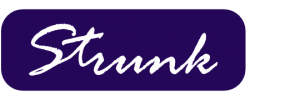How a Pricing Solution Empowers Lenders at a Community Bank
Lenders often tell us they determine loan pricing by “pulling a number out of the air” or simply reacting to the competition. This approach puts your bank at a disadvantage.
A loan pricing tool gives your lenders a crucial resource to ensure every deal they work on is consistent relative to other deals the bank makes. Utilizing a tool makes the daily process of pricing a loan much easier and equips your lending team with the power to make better, more profitable decisions.
Winning Business with Options and Transparency
People love options. A pricing solution provides a straightforward way for lenders to create optional scenarios for the borrower, which can help win more business. Even if a borrower chooses the original option, offering alternatives leaves them with the impression that the bank was working hard to earn their business.
It also sends a powerful message: there is a detailed methodology behind your pricing decisions, meaning the initial price is not just a number that should be negotiated.
By arming lenders with the data and drivers of profitability, they can develop multiple scenarios that work for their customer. For example, if a customer is rate-sensitive, the tool will show what other factors affect profitability, allowing the lender to still structure a deal that works for the bank.
Strunk’s Proven Approach for Lender Buy-In
At Strunk, we place lender buy-in at the center of our tried-and-true training process. Having trained lenders at over 400 financial institutions over the years, we know what works.
Our training starts by asking for specific examples of live loans—typically deals we know will produce a profitable result. This helps the audience see that the results make sense. It often reveals opportunities where the bank could have won a deal they lost or passed on because they thought a competitor’s pricing was too low. It’s easy for lenders to see that the approach is sound and could help them win more deals.
Once lenders are onboard with the profitable opportunities, we dig into areas where current pricing is producing less-than-optimal results. At that point, it’s hard for the audience to discredit the approach because they’ve already concluded that it makes sense for the more profitable deals.
Designed for Lenders
Strunk’s Pricing Manager is designed with the user experience in mind. The goal is to provide quick, accurate, and consistent pricing results.
- Lenders can model a loan in minutes. We are routinely told how easy our tools are to use.
- We display the results—calculation by calculation—for every month throughout the life of the loan.
- This means users can see exactly how the solution arrives at the calculated result. This transparency is a huge benefit for achieving full lender buy-in. Lenders know they aren’t just inputting a few variables and pressing “Save” with no idea how the result was reached.
While lenders leverage the tool for each pricing decision, management gains access to up-to-date reports on the full loan portfolio. Our management reports group data based on loan type, lender, loan size, and Return on Equity (ROE).
By giving your lenders the power of accurate, consistent, and transparent pricing, you can empower them to make better decisions and capture more profitable business.
For more information, please email info@strunkaccess.com or visit us at https://strunkaccess.com/pricing-manager/ to schedule a brief demo.


